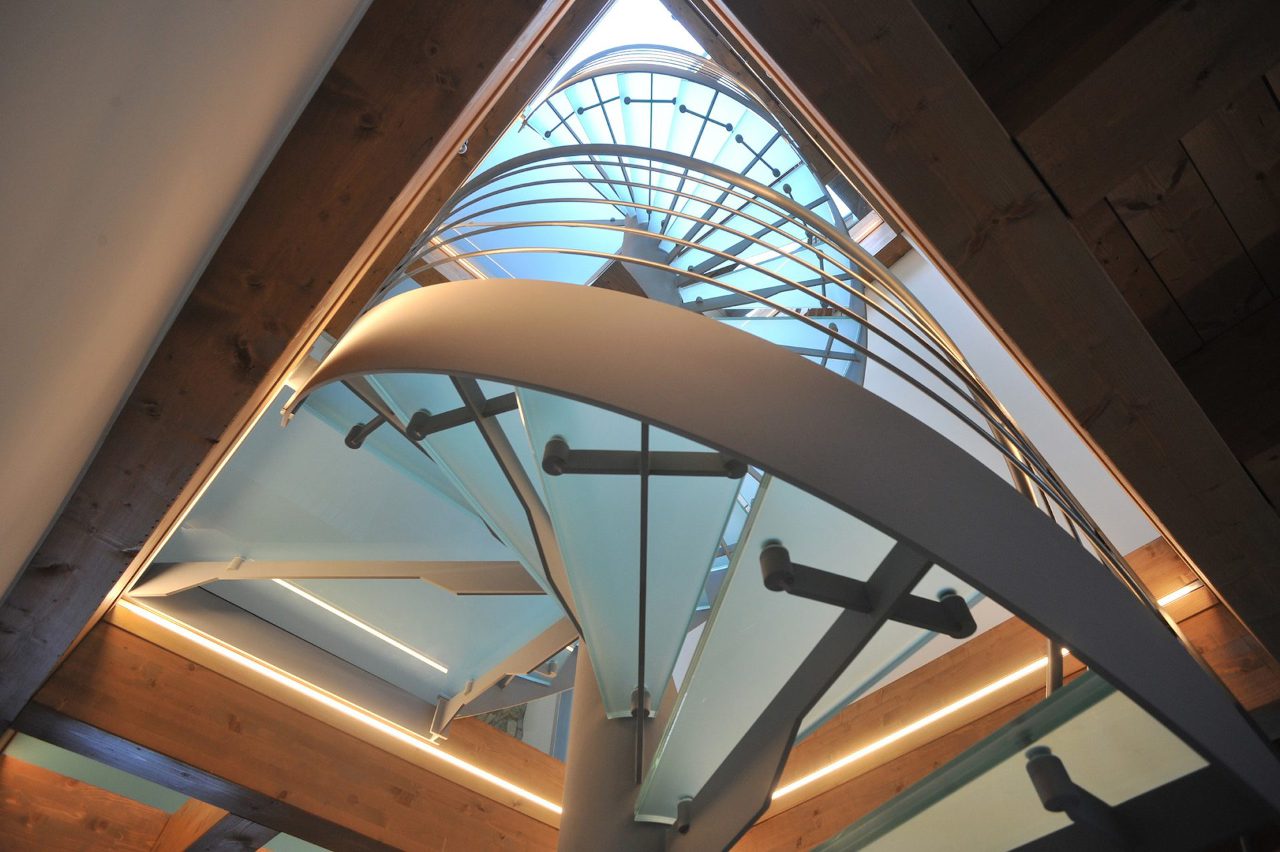
Steps, railings, staircase stringer cover and other details
7 June 2023
Scaletta dei contenuti
A staircase is composed of various constituent elements that can be summarized in a simplified way, without going down into too many technical details: the ramp (or more ramps) represents precisely the inclined space between the two levels – arrival at the landings – in which the steps follow one another.
Parapets, railings or balustrade separate the staircase, in turn composed of minor elements, and close it to the void to protect (and now ornament); the lateral legs follow the course of the ramp supporting the steps especially in some types of installations, and the staircase stringer cover may be of great importance in a staircase design, open stairs or spiral staircase.
Steps – both steps for internal stairs and steps for external stairs – are the most evident central factors of a staircase-structure, in some cases almost separate elements. Let’s look more closely at every element.
Some elements, to open from the step
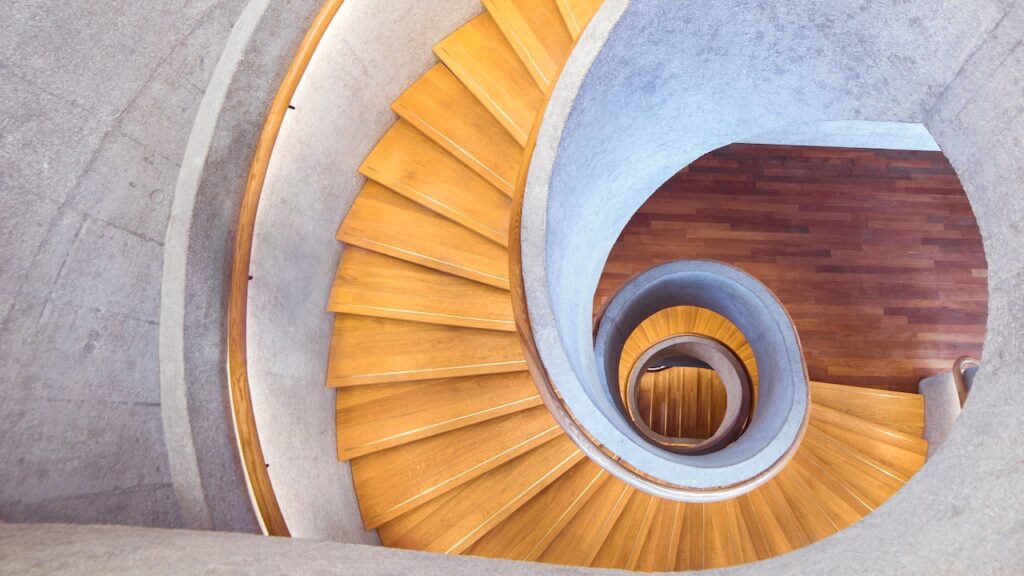
A staircase can be designed and realized in many different versions, development in plan, width and interfloor measures etc.
What does not change, even in the most modern staircase as, for example a special glass staircase or a crazy helical staircase, is the need to determine primarily the preferable proportion between tread and lift of the steps and their number.
It will be these factors immediately to ensure that the crossing of the staircase itself is easy and safe during the ups and downs, even before materials and finishes are chosen with which to make or cover the steps. A step is basically made
- from the horizontal part of the tread, which qualifies as the actual surface on which the feet rest during the ups and downs
- the lift is the difference in height between one step and the next (the lift can be opened or closed with very different effects in terms of aesthetics)
The size of the width naturally determines the width of the staircase.
Quality of the material – any coating – that is absolutely durable and durable, color and texture represent the core of what is important in the choice of steps (steps for the external staircase need special care).
Structure and steps, even when we talk about cantilevered steps in suspended stairs with a non-visible structure, outline together an element that must necessarily give the maximum in terms of safety and aesthetics.
The materials and their variants are fundamental for aesthetic impact, harmony with the context but also for their physical characteristics. Even wooden steps for stairs exist with many essences with completely different results!
Some details concerning the steps acquire a certain importance in the whole of a project, but not only that; in fact all the details all contribute to a certain extent to the overall impact, such as staircase stringer cover,a closed stringer staircase cover (e.g an oak stringer cladding), blank panel for parapets or essential metal railings and so on.
Especially in some cases it is possible, sometimes preferable, to use profiles for steps that can be made of steel or other material, tending to make the edge even more robust, which is the part most exposed to stress, in other cases as a non-slip solution – technical stair nose.
Even a skirting board for steps could be an additional element of finishing and can be used to define some types of stairs as a factor of continuity with the remaining environments; a skirting can reach higher aesthetic levels than you might think, as there are various materials.
In any case, as well as through the use of marker lights, or Led profiles integrated step, it is the sum that makes the total!
The degree of finish, attention to detail, harmony between shapes and colors, between opacity and light, overall return the eye of a well-made and quality structure, regardless of the style that is always personal.
Calculate steps of an internal or external staircase, in a open staircase or in a spiral staircase
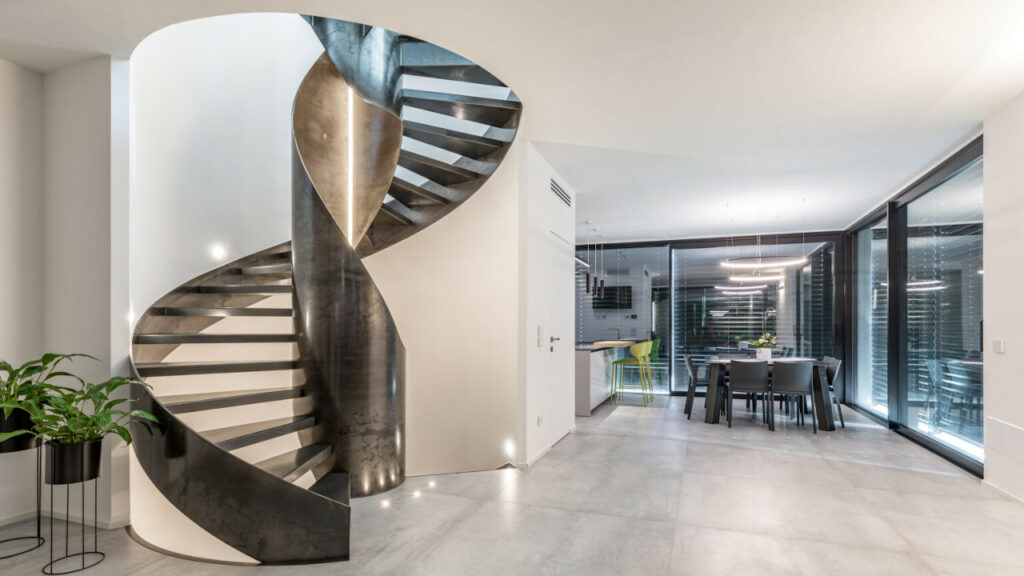
We mentioned the fact that during the design of a staircase, whatever the anatomical-structural nature, it is essential to calculate the right proportion between tread and riser in slope and consequently the number of steps of the ramp.
These measures have a significant specific weight during the use of the stairs: very trivially even a handful of centimeters of difference can make the ups and downs easy or extremely uncomfortable, safe and comfortable or uncertain.
Without going too far into technical details, we mention the main instruments for determining measurements of steps, be they cantilever steps or of spiral staircase etc.
Scaling in a staircase design
The rule that is usually most used for the purpose of calculating tread and step lift is known as the Blondel Rule corresponds to 2a (lift) + p (tread) = 62 to 65 cm.
This formula has some limitations; an alternative, for example, was proposed by André Hermant (architect), who made reasoning on the rhythm of the step, steps to the second etc. other authors have proposed different studies…
On average, between rules and experience, there are the following measures: with regard to the lift not less than about 15 cm within a tendential maximum 20 cm; as for the tread should reach at least 28 cm, never less.
Materials for steps, staircase stringer cover, railings and parapets in a indoor or outdoor staircase design
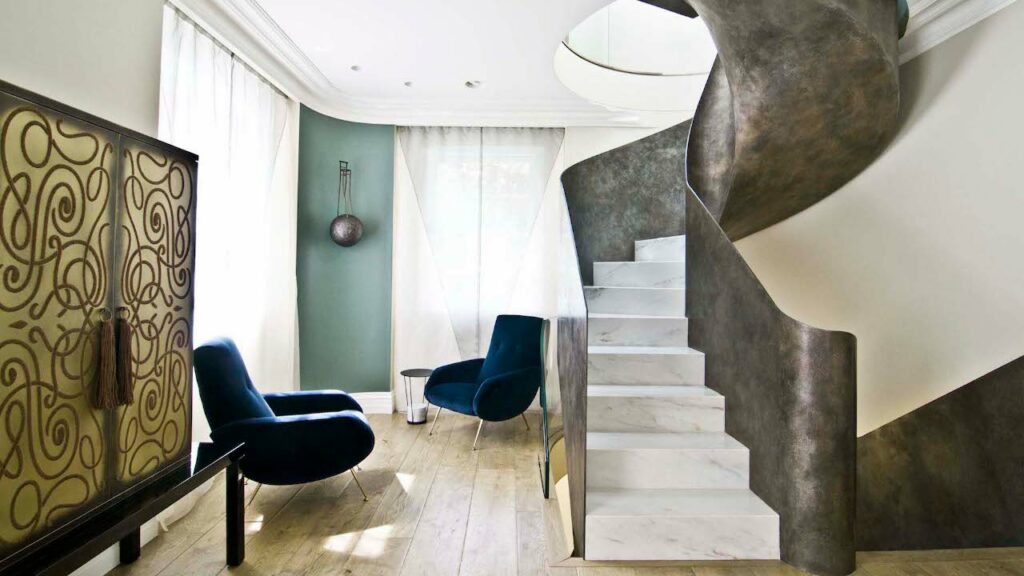
The stairs as connecting structures but also of furniture/ ornament are fundamental components in the interior design because in size and aesthetics are now customizable in several ways.
An interior staircase, once the location and the context of the reference style have been evaluated, is able to become the focal point of design and connecting element of the surrounding furnishings.
Equally a staircase for your outdoors can hold the rows of the style of a facade, a garden or a pool area, a courtyard or a porch even a few steps for outdoor staircase can give the desired effect.
It is of fundamental importance to make the optimal choices regarding the exteriors, like typology of steps and/or coverings; in a staircase design for exterior steps coverings, stair stringer cladding, railings have to deal with natural elements, if the staircase in question is not closed.
In addition to the design and style of reference and therefore also the choice towards a certain homogeneity of tones in consistency with the facade or the choice of making the staircase element stand out in contrast in the outdoors, for exteriors we focus mainly on certain aspects.
In fact for steps material,stair stringer cover and railings or balustrades, some basic aspects must be calculated:
- In addition to the usual resistance to shock and abrasion, an additional resistance to weathering is needed : moisture, extreme temperatures, antifreezing.
- maximum possible waterproofing; cracking reduced to a minimum
- also maintenance and cleaning must be kept to a minimum and easy to handle
For example, natural stone but also tiles for stairs inside but also optimal for outdoor reach high aesthetic standards and, with regard to the exterior, have other important features. The type of tiles for steps (for example in porcelain stoneware) should be chosen as a covering having the right information, of context in the first place, but also of the actual size.
With regard to the other elements, there are many railings on the market and possibilities of staircase stringer cover with an assortment of different solutions to customize not only the interior of a house, but also the outdoor spaces.
The outdoor iron railings remain the most frequently selected ones, iron railings for external balconies and terraces, railings for exterior iron stairs and railings for exterior wrought iron stairs, to delimit a garden or simply the property.
An iron railing in fact has the prerogative of being one of the most ductile and robust materials you can choose from
- is extremely solid and resistant even to large temperature changes
- during the forging process it is possible to convert it to various geometries and shapes
- requires minimal maintenance, therefore entails a saving of means and time
Thanks to the hot galvanization and other treatments such as paints for exterior iron railings its use is not compromised by atmospheric agents and therefore by rust.
You can create original or simple, rustic or modern solutions, mimic materials with different effects, and you can make a significant contribution to the overall aesthetic impact and design, maintaining the assumptions we talked about earlier.
Learn more about staircase string cover and other details
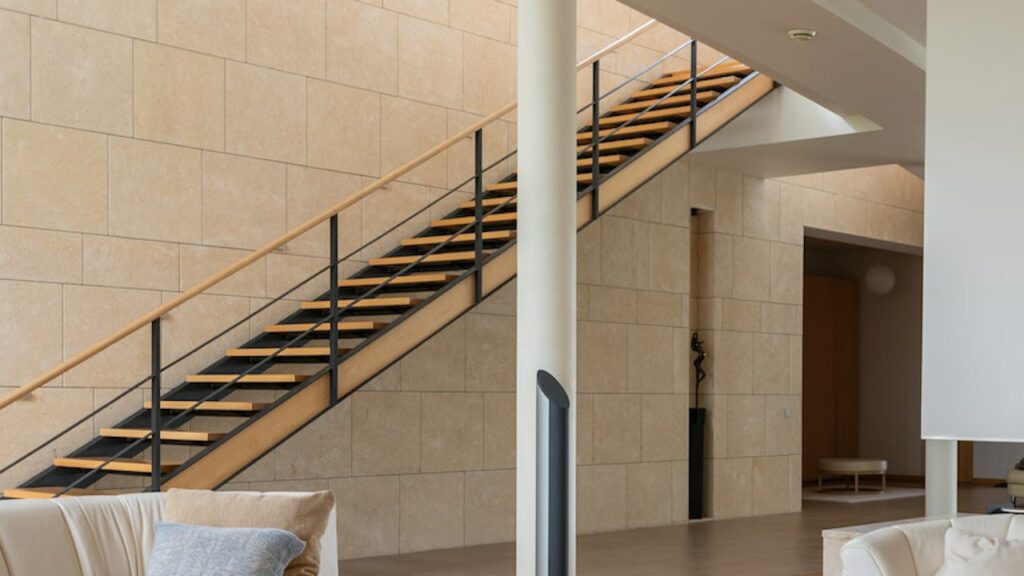
Do you want to know more about staircase string cover and other interesting details of a modern staircase, how to include it in your project or do you have any curiosities to submit to our experts? Fill out the form, and request a free telephone consultation!

